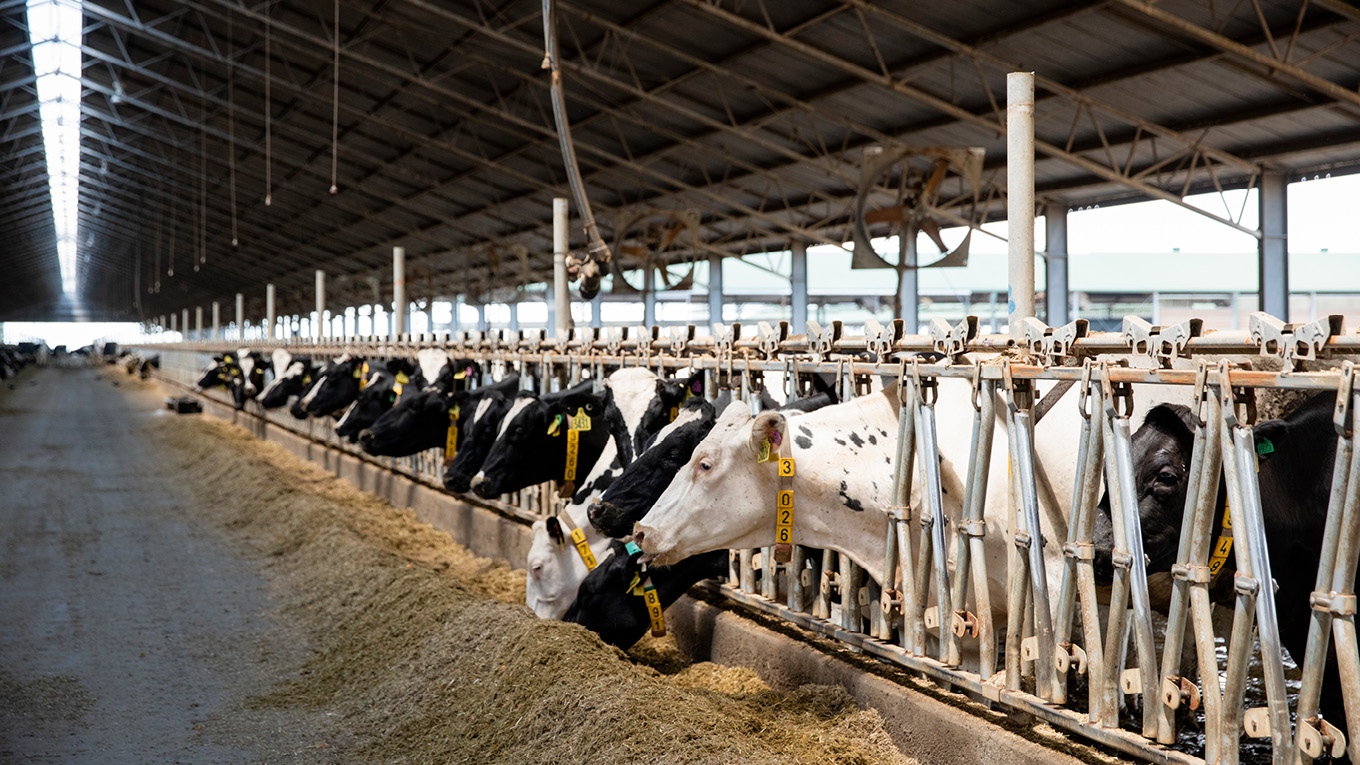Portable Shade Structures
Portable shade structures can be located in paddocks/ laneways, in dry corners of centre pivot irrigated paddocks or near portable feeding troughs and hay rings.
Portable paddock shade structures may incorporate shade cloth or corrugated iron roofing. Some shade cloth materials are now heat resistant and reflective and designed for harsh conditions. This means they can last longer, but still require some maintenance.
Strengths
- Portable shade structures enable you to bring the shade to the cows, as opposed to cows to the shade.
- Best suited to smaller herds.
- Can be readily moved with the animals, or moved to cleaner, drier locations close to feed and water when necessary.
Limitations
- May need several structures to provide sufficient shade for all animals.
- May lead to localised pugging, nutrient build-up or compaction if not shifted regularly.
- A time cost needs to be allocated to shifting shade structures.
- Shorter useful life than a permanent shade structure.
- Vulnerable to high winds.

Portable paddock shade structures
Keys to success
- Use portable structures to expand existing tree shade, if located near property boundaries. Shade structures should be positioned to take advantage of from neighbouring vegetation on road reserves.
- Re-locate structures if manure builds up or the ground underneath is muddy. This reduces the risk of mastitis around calving time – the risk is particularly high if the condition of cows’ teat ends is poor.
- Seek professional advice from a registered engineer or builder before you build your own structure.
- Install properly under tension, so it is not damaged by winds.
- Make sure that it blocks at least 80% of sunlight.
- Seek professional advice from a registered builder or structural engineer, as the height of the portable shades will affect wind loads on the structure.
- Wind load will increase with roof height and therefore the base needs to be heavier and wider to prevent the wind from tipping the structure over.
- Ensure there is a gap between the portable sections of the roof (when raised), so that heat can be vented through the top of the structure. This is especially important for iron roofed structures.
Published:


